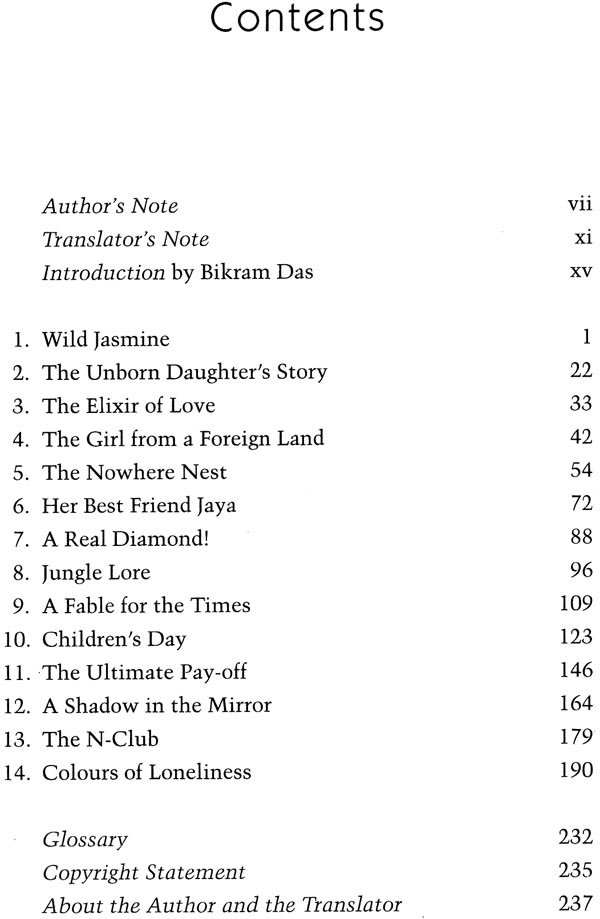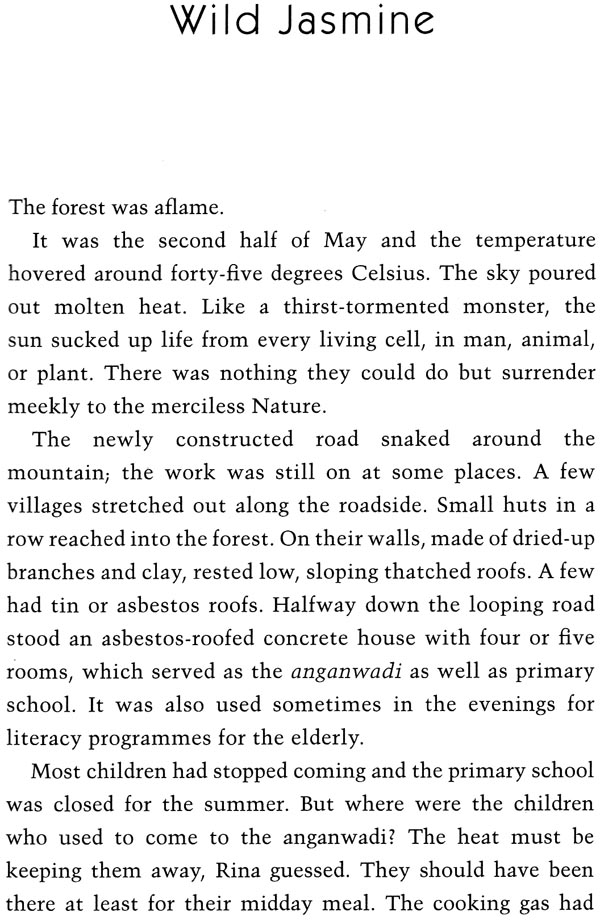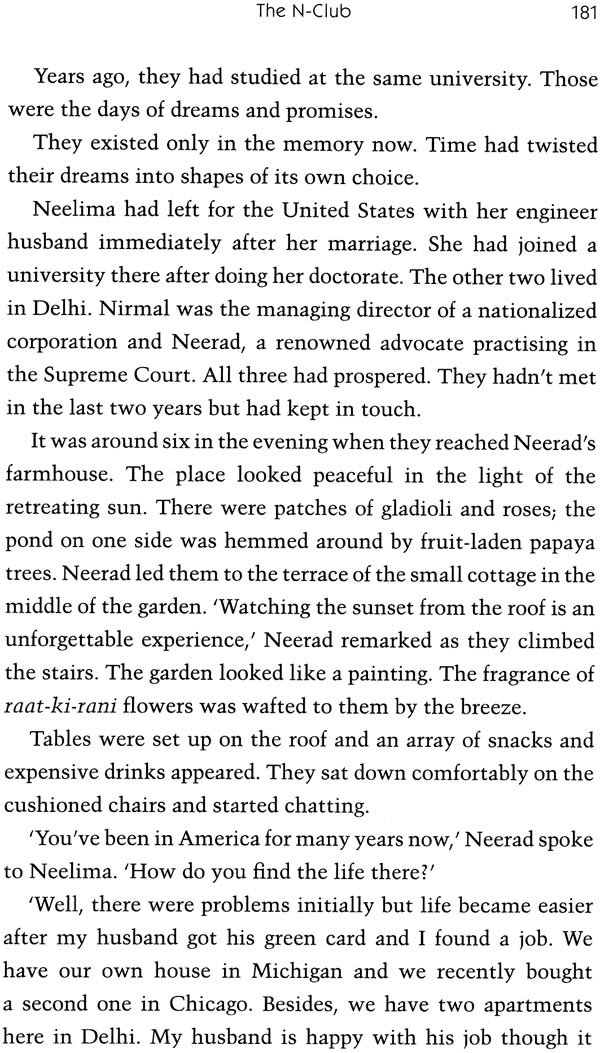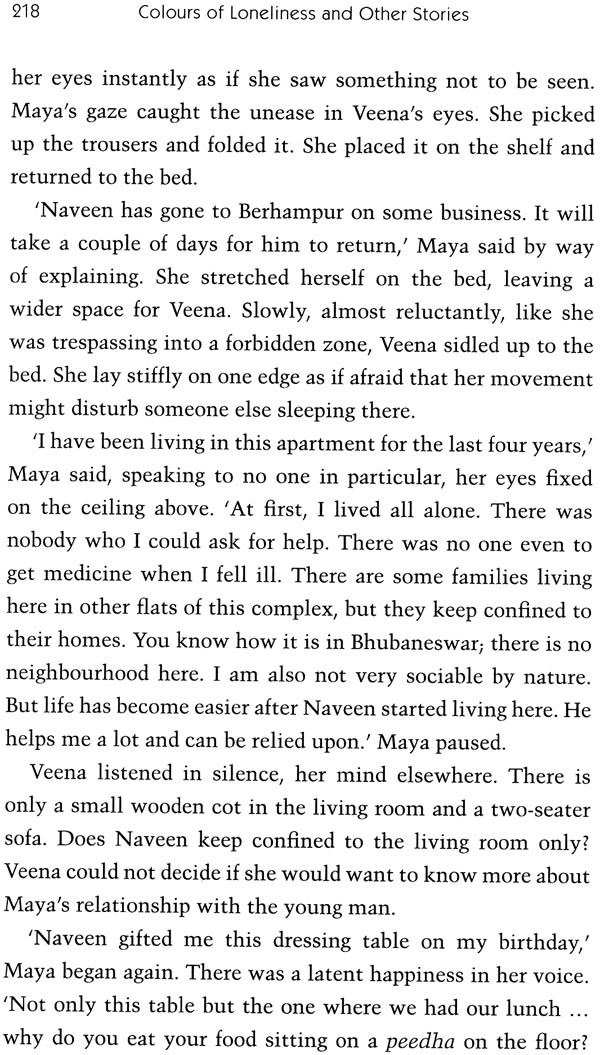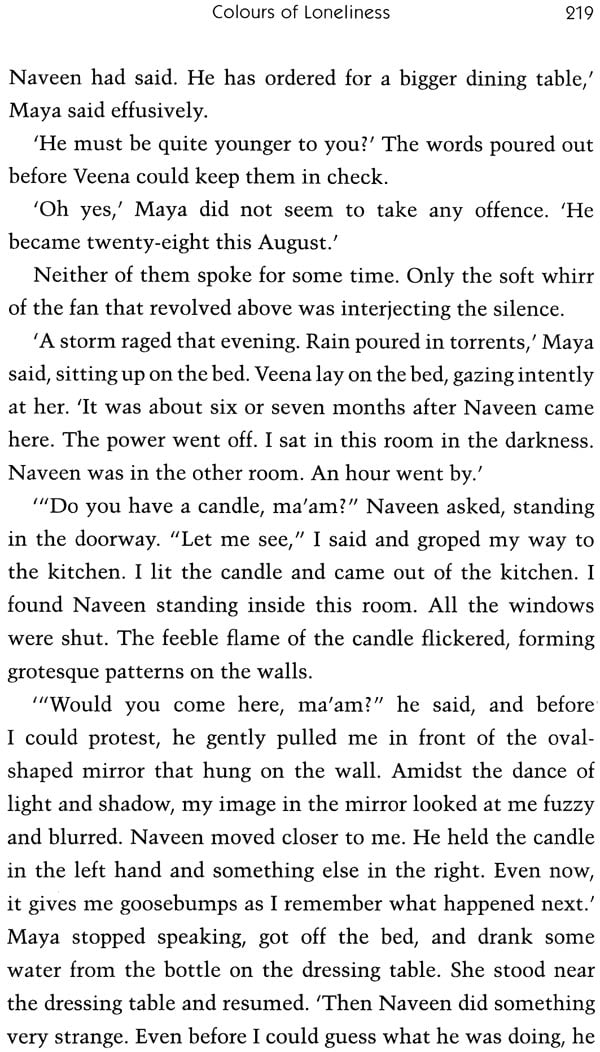
Colours of Loneliness and Other Stories
Book Specification
| Item Code: | NAR861 |
| Author: | Snehaprava Das |
| Publisher: | Oxford University Press, New Delhi |
| Language: | English |
| Edition: | 2019 |
| ISBN: | 9780199494569 |
| Pages: | 256 |
| Cover: | PAPERBACK |
| Other Details | 8.50 X 5.50 inch |
| Weight | 290 gm |
Book Description
This is a collection of fourteen short stories by Paramita Satpathy. These stories are full of characters that conceal their true persona under a veneer of a false confidence who are then are driven to seek a state are of euphoria, releasing these dormant passions in unguarded moments.
We have characters like Maya, whose life seems to upend the moment spots appear on her body. On the other hand, for her best friend Veena, life seems to be most sorted. Everyone seems to pity Maya, and she longs to be included, to belong. Yet as the years progress, it is Maya who has created a stable life for herself, while Veena is left wondering where she went wrong in life.
There is also Babula, the orphan, who has to bear with whatever abuse Bata Sahu throws at him, in order to survive, and his struggle to break free from it. Prachi, the bride-to-be, who discovers her fianceís true animalistic nature; and Ranjita, the new bride who becomes the ultimate pay-off for her in-lawsí greed. For some protagonists, itís the societal shackles they need to break out from; for others it is their own closest relations that compel them to take a bold step towards self-realization.
Paramita Satpathy, an award-winning modern fiction writer in Odia, is considered an influential voice in Indian literature. She is a civil servant and presently works as Commissioner of Income Tax in Delhi, India.
Snehaprava Das has translated several works from Odia to English, as well as English to Odia. She retired as a reader in English from BA Government College, Berhampur, Odisha, India.
Paramita Satpathy Tripathy (b. 1965) belongs to the second generation of modern writers of fiction in Odia, following in the wake of masters like Gopinath Mohanty, Kishori Charan Das, and Manoj Das (to name only three). In the duration spanning more than three decades for which she has been writing, Paramita has carved out a niche for herself, with seven collections of short stories and three novels to her credit. Several of her stories have been translated into English, Hindi, and other Indian languages and published in leading periodicals as well as in book form. She has received the prestigious Central Sahitya Akademi award and several other literary honours.
Like many other writers of her generation, Paramita bridges the traditional and the contemporary. Her stories are carefully crafted and satisfy most canons of the classic short story, but they also have the fluidity and freedom of modern fiction.
The Odia short story is said to have originated in Fakir Mohan Senapati's 'Rebati', the tragic saga of a young girl who faces social persecution because of her passion for education. This pioneering work, produced more than 150 years ago, foreshadows several of Paramita's concerns as a writer, which are reflected also in some folk legends prevalent in Odisha that depict the suffering of the girl child. Prominent among them is the Tapoi legend, which is connected with an important Odia festival. However, women have not always appeared to the Odia imagination as helpless and subservient creatures. In every Odia home is preserved the myth of the Lakshmi Purana, which tells the story of how Lakshmi, the goddess of wealth, crushes the male ego of her lord and master, Jagannath, and his brother Balaram, denying them food until they seek her forgiveness. This is an acknowledgement of the primacy of the female not only in the home but also in the cosmic order. Several of Paramita's stories are a tribute to the inherent resilience and strength of women.
Being a woman herself, intensely aware of the indignities that women suffer in a male-dominated society, Paramita would inevitably have responded strongly to the feminine experience. Yet she does not accept the label 'feminist' that is often thrust on her. 'I do not necessarily represent the woman's point of view,' she mentions, 'but I do have a woman's imagination and see the world as a woman."
Paramita is committed in equal measure to her art and her ideology. 'It has always been important for me to tell a good story,' she says, 'but I firmly believe that no form of art can exist without a vision. Most of my stories have begun as a feeling that flashes across my mind and grows on me. I try weaving a plot around it. I write about things that I have felt intensely about and attempt to express that part of women's lives which is often buried and endured in silence. It doesn't matter to me whether a clear message, political, social or moral, comes out of it or not.
Paramita's fiction is rooted in social reality: most of her characters, particularly her women, are people that we meet every day, and their experiences are such as we have all shared. But in several of her stories, Paramita creates a world that transcends social reality. She says, 'Creativity is often a struggle against social realism.'
The stories in the present collection have been selected by the translator out of a number of collections spanning almost the entire period for which Paramita has been writing, and they reflect the diversity of her creative output. As could be expected, most of the stories are 'gynocentric'. Each story, however, highlights a different facet of the female psyche.
'Colours of Loneliness', our title story, brings us the saga of two childhood friends with contrasting personalities. Maya is shown to be the shyer one, while Veena seems to be the more outgoing one. Maya's life changes as spots begin to appear on her skin, slowly spreading all over her body and face. Her spots become the symbol for loneliness, a matter of pityóeveryone assumes the worse life for her. Veena on the other hand gets married into a well-to-do family, and things seem to look up for her. Their lives led in different ways; yet each longs for the life the other has. Loneliness is the bottom line for both the women.
Rina, the protagonist of the first story, 'Wild Jasmine', offers perhaps the subtlest (being the most understated) view of the feminine personality. She is an unspoilt child of nature, a wild jasmine, and falls easy prey to the predator Ratan Singh. But she is not a flower that will wilt and droop: one can sense, though this is not explicitly stated, that she will stand up and fight. There is an element of ambiguity in the personal calamity that is visited on her and transforms heróone is not sure if she has been physically violated or emotionally brutalized.
Where 'Wild Jasmine' is a page torn out of life, 'The Unborn Daughter's Story' is a fable. There is, as has been said earlier, a well-established tradition in Odisha of storytelling from a feminine perspective, and it is to that tradition that this story goes back, together with the stories captioned 'A Fable for the Times' and 'The Elixir of Love'. 'The Nowhere Nest' focuses on the anguish of the daughter who feels dispossessed and banished, while 'The Ultimate Pay-off' shows the brutality of life when a daughter-in-law becomes the ultimate pay-off for her in-laws' greed. 'Her Best Friend Jaya' deals with female sexualityórather candidly.
Paramita's sympathies are not restricted to members of her own gender. 'Children's Day' deals with the problem of child abuse and pulls no punches! 'The Girl from a Foreign Land' brings forth repressed emotions to the front, while 'A Shadow in the Mirror' focuses on a haunting past. 'Jungle Lore' brings out the insensitivity and barbarity of the domineering male. 'The N-Club' and 'A Real Diamond!' expose the hollowness of contemporary materialistic culture.
This anthology, in English translation, gives readers across the country access to a sensitive yet powerful voice that has already created an imprint on the Odia mind. I am grateful to the translator, Snehaprava Das, for helping to bring Paramita to a wider readership.
**Contents and Sample Pages**
